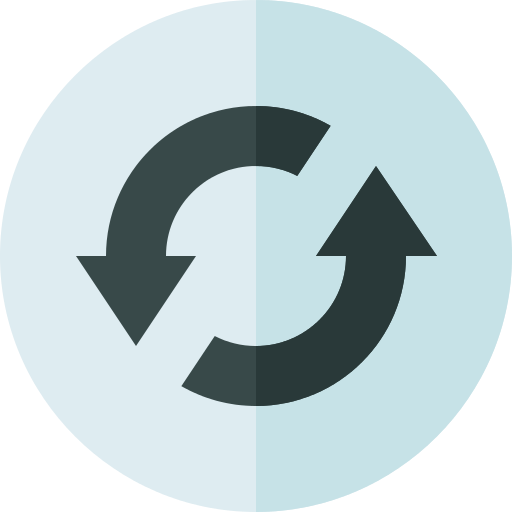8 Ways to Build Your SaaS Product Faster
In the fast-paced world of Software as a Service (SaaS), speed to market is a critical factor for success. Building and launching your SaaS product quickly allows you to seize opportunities, meet customer demands, and gain a competitive edge.
From effective planning and streamlined development processes to leveraging automation and collaboration tools, you will need to find a range of techniques to accelerate your SaaS product development journey.
In this article, we will explore strategies, methodologies, and best practices to help you build your SaaS product faster.
Define Clear Goals and Scope
Before embarking on SaaS product development, it's crucial to define clear goals and scope. Clearly articulate your product's purpose, target audience, and core features.
Set realistic milestones and establish a minimum viable product (MVP) that can be launched quickly. By having a well-defined scope, including a clear digital advertising strategy for SaaS, you can focus your resources and efforts on delivering the most essential functionalities and avoid unnecessary delays.
Embrace Agile Methodologies
Implementing agile methodologies, such as Scrum or Kanban, can significantly expedite your SaaS product development. Break down your project into manageable tasks and prioritize them based on customer value.
As you embrace Agile methodologies to enhance collaboration and adaptability, consider exploring other efficient tools that support these agile practices. Miro’s free PI planning software is a prime example. It can help streamline your development cycles by providing structured frameworks for PI planning, catering directly to the iterative and highly adaptive nature of Agile.
Adopt an iterative approach, working in short sprints to deliver incremental features and gather feedback for continuous improvement.
Agile methodologies foster collaboration, adaptability, and rapid decision-making, enabling you to build and refine your product efficiently.
As market conditions or customer needs evolve, the Agile approach will let you adapt development plans and reprioritize features.
This flexibility helps to deliver a more relevant and competitive SaaS solution while avoiding lengthy change request processes that can slow down traditional development approaches.
Leverage Existing Frameworks and Tools
To speed up development, leverage existing frameworks, libraries, and tools that can streamline your process. Utilize open-source solutions, development platforms, and pre-built components to expedite common functionalities.
Frameworks such as Ruby on Rails, Django, or Laravel provide a solid foundation and offer ready-to-use modules, reducing the time spent on repetitive coding tasks, depending on the SaaS product you are building.
Additionally, consider using development environments, testing frameworks, and deployment tools to automate and accelerate various stages of the development lifecycle.
Outsource Software Development
Outsourcing software development can expedite the process of building your SaaS product by providing access to a global pool of skilled professionals, efficient project management methodologies, and specialized expertise.
You can partner with software outsourcing companies where you can leverage their experience, streamline the SaaS development process. Focus on your core competencies while leaving the technical aspects to the experts.
Outsourcing SaaS software development lets you take advantage of rapid prototyping, iterative development, scalability, and flexibility, resulting in faster time-to-market. You will also experience significant cost savings and the potential for a 24/7 development cycle further contribute to accelerated SaaS product development.
Automate Testing and Continuous Integration
Testing and quality assurance are critical aspects of SaaS product development, but they can also be time-consuming. Implement automated testing processes, including unit tests, integration tests, and end-to-end tests, to quickly identify and fix issues.
Integrate continuous integration and continuous deployment (CI/CD) pipelines into your development workflow to automate build, test, and deployment processes.
This helps ensure that new code changes are thoroughly tested and deployed seamlessly, reducing manual effort and speeding up the release cycle.
Prioritize User Experience
Building a user-centric SaaS product requires prioritizing user experience (UX) throughout the development process, which answers the question, 'What is UX design?'
Conduct user research and usability testing early on to gain insights into user preferences and pain points. Focus on creating intuitive interfaces, responsive designs, and seamless workflows that make your product easy to use and navigate.
Also, make sure that the product includes features that are important in your niche. For example, Ollie offers sales management for breweries, meaning that their UX is specifically tailored to craft brewers.
By providing a positive and intuitive user experience, you can accelerate user adoption, minimize support requests, and drive customer satisfaction.
Foster Cross-Functional Collaboration
Encourage cross-functional collaboration within your development team and across departments. Foster open communication channels, encourage knowledge sharing, and break down silos.
Establish regular meetings, such as daily stand-ups and sprint reviews, to keep everyone aligned and informed. Collaboration tools, such as project management software, version control systems, and communication platforms, facilitate efficient teamwork, help resolve issues quickly, and prevent bottlenecks.
Monitor and Iterate Based on Data
Utilize data and analytics to monitor the performance and usage of your SaaS product.
Implement analytics tools to track user behavior, identify usage patterns, and gain insights into feature usage. Leverage customer feedback, support tickets, and user surveys to gather qualitative data.
Well, analyze this data to identify areas for improvement, prioritize feature enhancements, and make data-driven decisions. By continuously monitoring and iterating based on data, you can optimize your product's performance and address user needs swiftly.
Final thoughts
Building a SaaS product faster requires a combination of effective planning, streamlined development processes, automation, collaboration, and customer-centricity.
Remember, speed should not compromise quality, so always prioritize delivering a robust and reliable product. With the right strategies and practices in place, you can develop and launch your SaaS product quickly, gaining a competitive advantage in the dynamic SaaS market.
We hope this article has provided practical tips that you can apply to make your SaaS product a roaring success.



